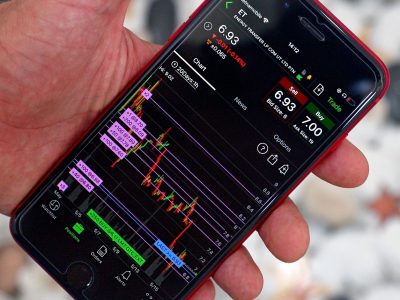
Inflation in the UK dropped unexpectedly to 1.7% in September 2024, its lowest level in over three years, according to the Office for National Statistics (ONS).
This sharp decline has raised the likelihood of the Bank of England cutting interest rates at its next policy meeting in November, as inflation now sits below the Bank’s 2% target for the first time since 2021.
Financial markets are reacting swiftly, with money market bets on a quarter-point rate cut jumping to 91%, up from 80% before the inflation data was released.
If the Bank follows through, interest rates would be lowered from 5% to 4.75%, continuing the loosening of monetary policy that began in August.
However, the larger question remains: can the UK avoid a prolonged period of stagnation, where falling inflation is accompanied by weak growth?
Inflation falls below the Bank of England’s target
The 1.7% inflation rate for September is a significant drop from the 2.2% recorded in August.
This marks the first time in over three years that inflation has fallen below the Bank of England’s target.
Economists had expected inflation to ease, but most forecasts placed the figure at 1.9%, making the 1.7% result a surprise to many.
The lower-than-expected inflation was driven largely by a decrease in fuel prices and a sharp fall in airfares.
Petrol and diesel prices dropped by 10.4% year-on-year in September, while airfares declined more than usual after the peak summer travel season.
These two factors combined to reduce price pressures across the board, although certain areas, such as food and non-alcoholic drinks, continued to experience rising prices.
Core inflation, which excludes volatile categories such as food, energy, alcohol, and tobacco, also declined in September, falling to 3.2% from 3.6% in August.
The services sector, a major driver of UK inflation in recent months, also showed signs of cooling, with price growth falling to 4.9% from 5.6% the previous month.
This represents the lowest rate of inflation for services since May 2022 and provides additional evidence that inflationary pressures are softening across key sectors of the economy.
Wage growth slowdown adds to rate cut momentum
The latest inflation figures come on the heels of data showing a slowdown in wage growth, which has been a key concern for the Bank of England in recent months.
Annual growth in total earnings, excluding bonuses, fell to 3.8% from 4.1%.
This suggests that the labor market is softening alongside inflation, reducing the risk of a wage-price spiral that could otherwise push inflation higher.
With inflation slowing and wage growth moderating, the Bank of England is increasingly expected to continue cutting interest rates.
A quarter-point rate cut in November would follow the Bank’s August cut, which was its first since it began raising rates in response to surging inflation in 2021.
The markets’ reaction was evident
In response to the inflation data, the British pound fell 0.6% against the US dollar, dropping below $1.30 for the first time in over a month.
The pound also weakened against the euro, reflecting expectations of further monetary easing by the Bank of England.
Meanwhile, UK government bond yields fell as investors anticipated lower interest rates.
The yield on 10-year UK gilts dropped to below 4.1%, down from 4.165% the previous day.
Falling yields reduce the cost of borrowing for the government, which could provide some relief as Chancellor Rachel Reeves prepares for the upcoming budget.
Energy prices and fiscal policy risks remain
Despite the positive news on inflation, some risks remain on the horizon.
Energy prices, which have been a significant driver of inflation over the past two years, are set to rise again in October due to an increase in the UK’s energy price cap.
This could push inflation back up in the coming months, creating new challenges for the Bank of England.
In addition, the government’s fiscal policy could have inflationary implications.
The UK Treasury is expected to announce a budget on October 30 that includes tax rises and spending cuts to address a projected £100bn deficit over the next five years.
How these measures interact with the broader economic environment could influence inflation and the Bank of England’s future decisions on interest rates.
Is the UK heading towards deflation or stagnation?
While the drop in inflation is welcome news for consumers and businesses, it comes at a time of slowing economic growth.
GDP is expected to be flat in the third quarter of 2024, following modest growth of just over 1% in the first half of the year.
This slowdown, combined with easing inflation and softer wage growth, raises the specter of a broader cooling in the economy.
These trends suggest that while the Bank of England will focus on supporting growth and preventing further economic slowdown, it must also remain cautious of external risks.
Rising energy prices and geopolitical tensions, particularly in the Middle East, could disrupt the UK’s fragile recovery.
As UK citizens look ahead, many remain uncertain about the country’s short-term economic outlook.
Should the country successfully navigate the current risks, a slow but steady recovery may still be on the cards.
However, with inflation falling, growth stalling, and new challenges emerging, the question remains whether the UK is on the right path—or heading towards a period of stagnation.
The post Is Bank of England prepared to respond to falling inflation and slowing wage growth? appeared first on Invezz









